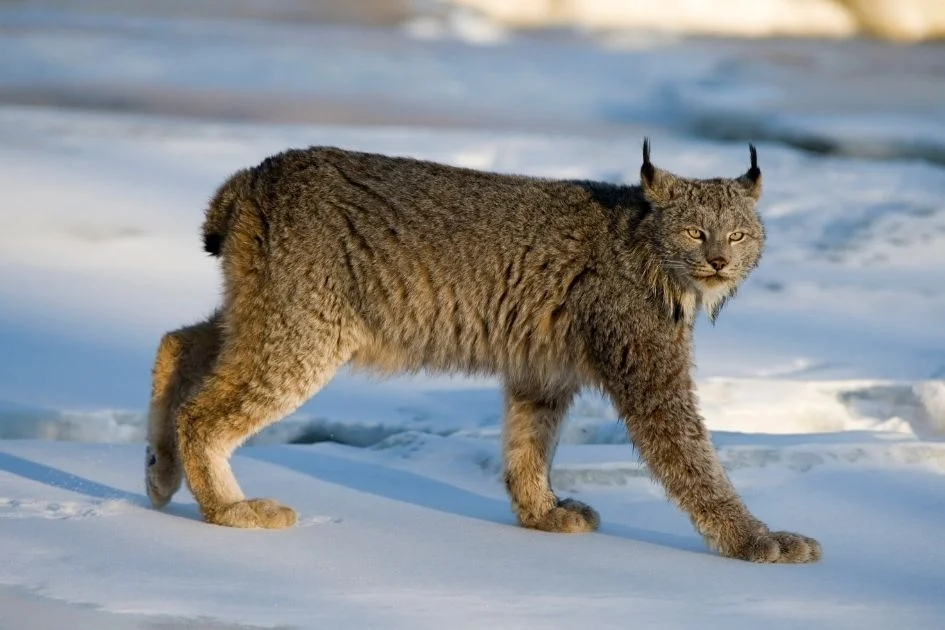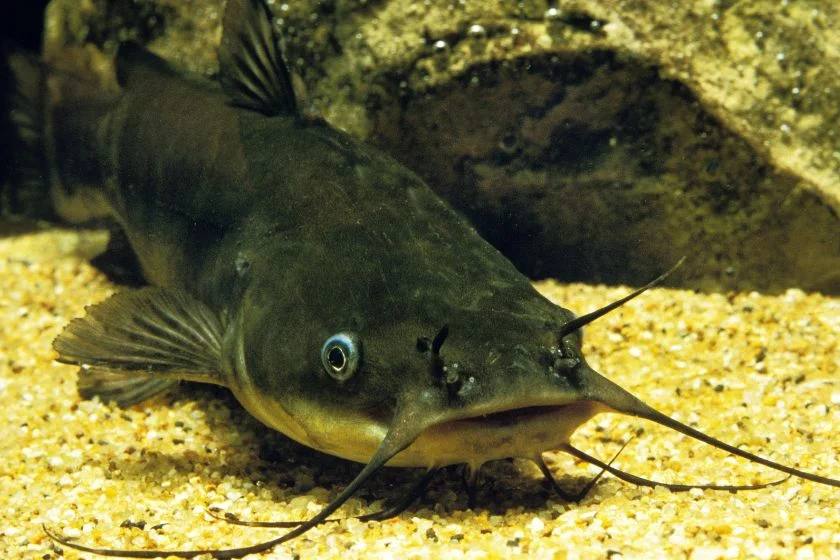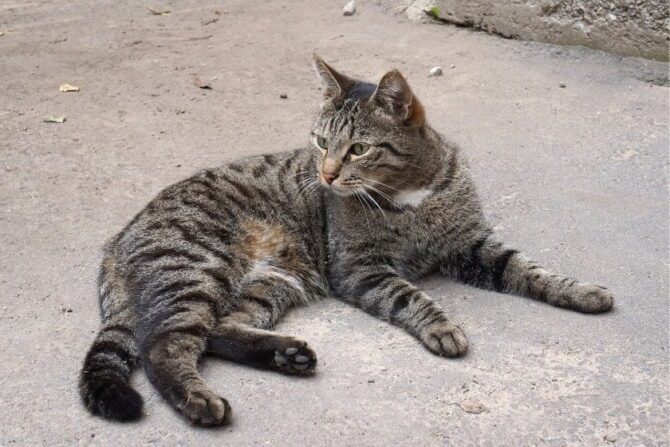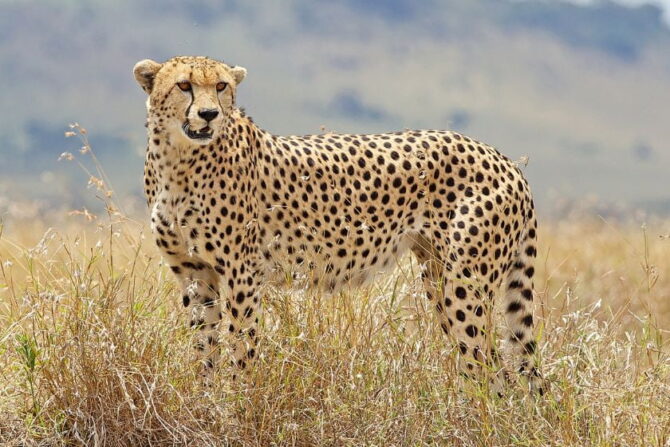Animals are an integral part of our world, and the diverse range of species is truly fascinating.
From insects like caterpillars and mammals like cats to large reptiles like caimans, each species is unique in its own way.
Animals that start with C are rampant and exist even more than you can imagine.
While you’ll see some live in our domestic areas, others inhabit the wild, where flora and fauna thrive best.
However, you just might not see some of these animals except on TV and in your favorite documentaries.
So, in this article, we’ll take a closer look at some of the animals that start with the letter C, including their names, pictures, and some interesting facts about them.
Alphabetical List of Animals that Start with C
Cabbage Moth
Gardeners tend to come across this pest frequently. They are small animals that wreak havoc on vegetables such as tomatoes and broccoli.
Although it is public opinion that this insect is attached to a specific set of vegetables, gardeners know that it is present in every plant.
A cabbage moth will feed on vegetables in the farm, where they tend to have a reputation for it.
Fun Fact: Gardeners name a cabbage Moth after the vegetable it finds the tastiest.
Cactus Moth
If you live in a cactus area, then you know what cactus moths are and how they look.
These are tiny little insects deemed not dangerous to humans but capable of damaging the cacti.
South Americans find this moth species common and have introduced ways to help reduce its presence, therefore preserving the cacti.
Fun Fact: Cactus moths are disruptive in the absence of predators.
Cactus Mouse
The cactus mouse is usually easy to identify with its large ears, pointed snout, hairy body, and long tail.
It is a species of mouse located in the southwestern United States and northern Mexico.
Produced from the Mammalia and Cricetidae families, this rodent controls its metabolism when necessary.
Fun Fact: Cactus mice reduce their metabolism to maintain a high enough temperature to survive with the little water at their disposal.
Cactus Wren
Those raspy mechanical sounds coming from the other side of the trail wherever you go hiking are probably those of the cactus wren.
This is a staple in desert environments, either perched on cacti or hopping around on dry dust.
The cactus wren mostly inhabits the southwestern United States and creates a scratchy serenade while communicating.
Fun Fact: It is the largest wren species in the US.
California Condor
Known as the largest bird in North America, California condors are a species of bird in the Cathartidae family.
They are easily identified by their nine-foot-long wingspan and soar over the wild spaces of the Southwest.
In today’s world, these braids are rare due to their endangered traits.
Fun Fact: California condors have been in existence for at least 40,000 years.
California Kingsnake

Originating from the Colubridae family, the California Kingsnake is a bold and beautiful snake species with adorable stripes along its body.
It is nonvenomous and nonpoisonous; it is also considered friendly, and it is usually sold as a pet at a low price.
This snake is 3.5 feet long and is found on the west coast of the United States and Mexico.
Fun Fact: There are cases of California snakes twice the size of a regular species (3.5 feet long).
Camel
Originating from the Camelidae family, camels are genera of camels inhabiting the hot deserts of North Africa and the Middle East.
The camel is a strong, large-hoofed animal with resilience and commitment.
Because of its high level of adaptation, this animal is used for traveling through deserts.
Fun Fact: A camel can survive without water for 10 months.
Canaan Dog
Native to the Arabian Peninsula, the Canaan Dog is a rare desert breed with ancient origins.
It is also the national dog of Israel and is known for its resilience.
An interesting dog breed like the Canine and German Shepherds, Canaan dogs are one of the oldest breeds recognized by the American Kennel Club.
Their existence and ancient traits are revealed in the archeological digs.
Fun Fact: Their survival instinct is high.
Canada Lynx

The Canada lynx is widespread in the woods and forests of Canada. It’s that cat you’ll find right above your head while climbing trees and performing other recreational activities.
This animal is also known as the “climbing cat” and spends most of its time on trees.
The Canada lynx is a common sight during the winter, as it loves to jump on snowshoes and is usually found in the woods in Canada and Northern America.
Fun Fact: The Canada lynx has natural snowshoes!
Canada Warbler
Flying across the United States and Canada, the Canada Warbler is a carnivore and more of an insectivore that feeds on moths, flies, mosquitoes, and caterpillars.
This is a different bird species usually identified by its bright yellow feathers and thrilling songs full of “chips-chips.”
The Canada Warbler migrates from South America through Canada, flying across countries and states.
Fun Fact: The Canada warbler travels more than 3,000 miles during migration.
Cane Corso
Produced from the Canidae family, this animal is a genus of Canis, a purely Italian breed.
It was first introduced as a guardian dog but was later found to be a good companion.
It gained notoriety after 1988 and nearly became extinct in the mid-1900s. Cane Corsos are a large dog breed with a long, athletic body that enables them to perform several activities.
Fun Fact: Thanks to a group of Italian breeders, Cane Corso numbers were restored to healthy levels.
Cane Spider
The cane spider is a genus of Heteropoda and a native of Hawaii and other tropical regions.
It has similar traits to regular spider species but hunts for its prey in a different manner.
This animal waits patiently before jumping on unsuspecting prey. It feeds on insects like cockroaches, flies, and moths.
Fun Fact: The cane spider doesn’t spin webs to catch prey like other spiders.
Capybara
This animal is in the genus Hydrochoerus and is the largest rodent in the world, weighing up to 75 kg and extending 1.4 meters in length.
Capybaras are large, semi-aquatic species found in the waterlogged areas of Central and South America.
With similar traits to other American rodents like Guinea pigs and Chinchillas, these animals spend their lives in the water.
Fun Fact: The capybara is skilled at swimming and diving!
Cashmere Goat
From the genus Capra, this goat is just like other goats, except that its skin can be useful for cashmere fiber and texture production.
Cashmere goats are no different, but they have unique traits and can be completely differentiated from others with their soft, downy winter undercoat.
Fun Fact: This goat was named after the Kashmir regions of India and Pakistan.
Cassowary
This is a different type of rat with long legs and large wings. They are genera of Casaurius and members of the Palaeognathae infraclass.
Cassowary wings are almost vesgetial and consist of a few quills, while their feathers have filaments that look like hair.
Fun Fact: The cassowary can reach speeds of 30 mph.
Caiman
These are social reptiles with a dangerous appearance, much like a crocodile but entirely different.
They have good-looking bodies and spend their lives in swampy waters in the wild.
Caimans are the type of animal you either see in the deepest part of the forest or in a documentary.
These animals are found in Central and South America. Their diet consists primarily of fish, and they can grow up to 6 meters long.
Fun Fact: Caimans have their eyes and nostrils on the top of their head and snout.
Cape Lion
The Cape Lion is one of the most dangerous and aggressive animals in the wild. They once inhabited Africa’s Southern Cape region.
Cape lions have similar traits to other lions and feed on other animals as prey. They roam about the wild with their huge, sharp claws, strong teeth, and an urge for meat.
Cape Lion also has a distinct black mane that makes it stand out from other lions.
Fun Fact: The Cape Lion is a symbol of strength and nobility in African culture.
Caribou
These are wildlife animals that have the appearance of a bull or deer with antlers that look like tree branches.
Their large, connected antlers are one of their distinct characteristics.
Their coats form a lighter or darker shade, depending on the environment they find themselves in.
Unlike other cervids, both males and females enjoy the benefits of having prominent antlers.
Fun Fact: Caribou’s antlers grow annually.
Catfish

With a sensory function and whiskers around their jaws, catfish are one of the most widespread animals that live in fast-flowing rivers.
They tend to become endangered species when pulled out of the water.
These animals serve as food worldwide and are a common product in agricultural industries. Also, they are rampant and inhabit almost every part of the world.
Fun Fact: Catfish can have a lifespan of up to 20 years in the wild.
Cat

Since ancient Egyptian times, the existence of cats has always been known to everyone.
Their senses are superior, with incredible sight, smell, and taste. Cats were usually worshiped by the ancient Egyptians due to the belief that it was sacred animal.
Today, it is a common sight in many homes and communities worldwide.
Fun Fact: They were first domesticated by the ancient Egyptians.
Cat Snake
The cat snake is a species of snake in the Colubridae family. It is a nocturnal animal with good hunting skills and cat-like eyes that aid seeing in the dark.
Cat snakes are usually dominant over unsuspecting prey and tend to attack with ease.
They are a loosely related group of many different species in the Colubrid family.
Fun Fact: Some cat snakes possess a prehensile tail that helps them hold onto trees while climbing.
Cat-eyed Snake
While many confuse the name of this genus with that of cat snakes, this animal is entirely unique. It is a genus of slender snakes with huge cat-like eyes.
The genus, however, consists of 12 to 16 recognized species, some of which include the rainforest cat-eyed snake, the northern cat-eyed snake, the banded cat-eyed snake, and many more.
Fun Fact: A study shows that females can delay fertilization and store sperm for a later period to reproduce young, even in the absence of a male.
Catahoula Bulldog
These animals are hybrid dogs whose parents are the Louisiana Catahoula leopard dog and the American bulldog.
Catahoula bulldogs are loyal and friendly to their owners, plus they are great with families.
The name is derived from an Indian word meaning “clear water,” relating to the breed’s first habitat, which is the Catahoula Lake.
Fun Fact: Catahoula bulldogs are medium to large-sized breeds, weighing between 75 and 100 pounds.
Caterpillar
As surprising as it may seem, the only job of a caterpillar is to eat and grow in size.
This animal is the larvae of a moth or butterfly that continues to grow in size and may gain weight by 1,000 times before metamorphosizing into a moth.
Fun Fact: Research shows that there are over 20,000 species of caterpillars in the animal group, with many more yet to be discovered.
Cheetah

Cheetahs are the fastest land mammals in the world. These felines have five different species, each with its own characteristics depending on their location.
Cheetahs run through the forest, searching for prey most of the time.
They have “tear marks” that run from the inner corner of their eyes and make them stand out from other big cats.
Fun Fact: Dating back to the ancient times when villagers had to hunt for food in the wild, cheetahs were domesticated and known as useful hunting companions.
Chinstrap Penguin
These penguins are one of the most aggressive penguin species in the world.
They are widespread in several parts of America, making them one of the most numerous species. Chinstrap penguins also mate for life.
Fun Fact: The largest chinstrap penguin colony has more members than San Francisco has people.
Cross River Gorilla
These are large animals inhabiting the mountain regions between Nigeria and Cameroon.
Cross-river gorillas are also one of the most endangered species in Africa and live in groups of 2 to 20, where only one male acts as a leader.
Fun Fact: Cross-river gorillas stop reproducing until their young ones reach 3 or 4 years.
Conclusion
For animal enthusiasts, animals that start with C have interesting backgrounds and ancient traces.
The list above is just a small representation of the extensive number of extant species in our world today.
If you’d like to discuss any of these animals or perhaps add yours to the list, use the comment section below.






